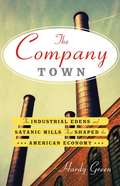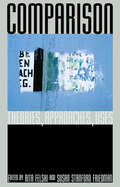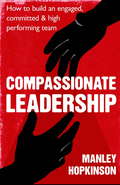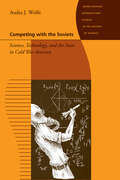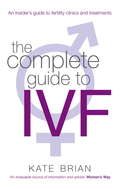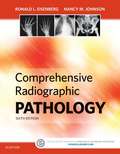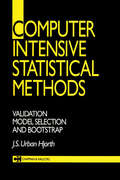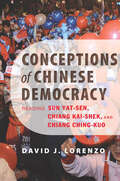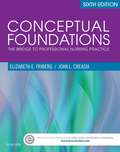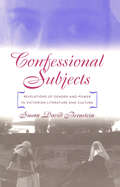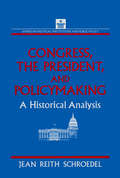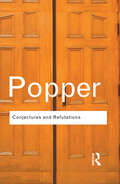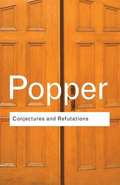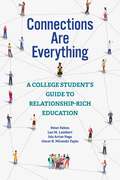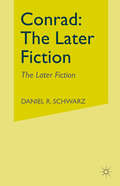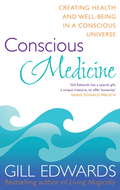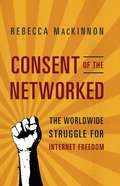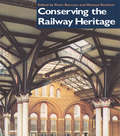- Table View
- List View
The Company Town: The Industrial Edens and Satanic Mills That Shaped the American Economy
by Hardy GreenCompany town: The very phrase sounds un-American. Yet company towns are the essence of America. Hershey bars, Corning glassware, Kohler bathroom fixtures, Maytag washers, Spam—each is the signature product of a company town in which one business, for better or worse, exercises a grip over the population. In The Company Town, Hardy Green, who has covered American business for over a decade, offers a compelling analysis of the emergence of these communities and their role in shaping the American economy, beginning in the country&’s earliest years. From the textile mills of Lowell, Massachusetts, to the R&D labs of Corning, New York; from the coal mines of Ludlow, Colorado, to corporate campuses of today&’s major tech companies: America has been uniquely open to the development of the single-company community. But rather than adhering to a uniform blueprint, American company towns represent two very different strands of capitalism. One is socially benign—a paternalistic, utopian ideal that fosters the development of schools, hospitals, parks, and desirable housing for its workers. The other, &“Exploitationville,&” focuses only on profits, at the expense of employees&’ well-being. Adeptly distinguishing between these two models, Green offers rich stories about town-builders and workers. He vividly describes the origins of America&’s company towns, the living and working conditions that characterize them, and the violent, sometimes fatal labor confrontations that have punctuated their existence. And he chronicles the surprising transformation underway in many such communities today. With fascinating profiles of American moguls—from candyman Milton Hershey and steel man Elbert H. Gary to oil tycoon Frank Phillips and Manhattan Project czar General Leslie B. Groves—The Company Town is a sweeping tale of how the American economy has grown and changed, and how these urban centers have reflected the best and worst of American capitalism.
Comparative European Party Systems: An Analysis of Parliamentary Elections Since 1945 (Contemporary Issues In European Politics Ser. #Vol. 5)
by Alan SiaroffComparative European Party Systems, Second Edition, provides a comprehensive analysis across 48 party systems of party competition, electoral systems and their effects, and the classification of party systems and governments from 1945 through late-2018. The book consists of three parts. Part I provides a comparative and quantitative overview of party systems according to party families, patterns of party competition, electoral systems and their effects, and classification of party systems and governments. Part II consists of 38 detailed country profiles of longstanding democracies and of the European Union (plus nine profiles on regions such as in Spain and the UK), providing essential detail on the electoral systems, parties, party patterns and systems, dimensions of political competition, and governments. Part III provides an analysis of 10 additional country profiles of oscillating regimes such as Russia, Ukraine, and Balkan and Transcaucasus states. Comparative European Party Systems provides an excellent overview of topical issues in comparative election and party system research and presents a wealth of information and quantitative data. It is a crucial reference for scholars and students of European and comparative politics, elections, electoral systems, and parties and party systems.
Comparison: Theories, Approaches, Uses
by Rita Felski Susan Stanford FriedmanWriting and teaching across cultures and disciplines makes the act of comparison inevitable. Comparative theory and methods of comparative literature and cultural anthropology have permeated the humanities as they engage more centrally with the cultural flows and circulation of past and present globalization. How do scholars make ethically and politically responsible comparisons without assuming that their own values and norms are the standard by which other cultures should be measured? Comparison expands upon a special issue of the journal New Literary History, which analyzed theories and methodologies of comparison. Six new essays from senior scholars of transnational and postcolonial studies complement the original ten pieces. The work of Gayatri Chakravorty Spivak, Ella Shohat, Robert Stam, R. Radhakrishnan, Bruce Robbins, Ania Loomba, Haun Saussy, Linda Gordon, Walter D. Mignolo, Shu-mei Shih, and Pheng Cheah are included with contributions by anthropologists Caroline B. Brettell and Richard Handler. Historical periods discussed range from the early modern to the contemporary and geographical regions that encompass the globe. Ultimately, Comparison argues for the importance of greater self-reflexivity about the politics and methods of comparison in teaching and in research.
Comparison: Theories, Approaches, Uses
by Rita Felski Susan Stanford FriedmanWriting and teaching across cultures and disciplines makes the act of comparison inevitable. Comparative theory and methods of comparative literature and cultural anthropology have permeated the humanities as they engage more centrally with the cultural flows and circulation of past and present globalization. How do scholars make ethically and politically responsible comparisons without assuming that their own values and norms are the standard by which other cultures should be measured? Comparison expands upon a special issue of the journal New Literary History, which analyzed theories and methodologies of comparison. Six new essays from senior scholars of transnational and postcolonial studies complement the original ten pieces. The work of Gayatri Chakravorty Spivak, Ella Shohat, Robert Stam, R. Radhakrishnan, Bruce Robbins, Ania Loomba, Haun Saussy, Linda Gordon, Walter D. Mignolo, Shu-mei Shih, and Pheng Cheah are included with contributions by anthropologists Caroline B. Brettell and Richard Handler. Historical periods discussed range from the early modern to the contemporary and geographical regions that encompass the globe. Ultimately, Comparison argues for the importance of greater self-reflexivity about the politics and methods of comparison in teaching and in research.
Compassionate Leadership: How to create and maintain engaged, committed and high-performing teams
by Manley HopkinsonForcing compliance is easy. Anyone can 'make' another do a task or a job. It will get done, but when, and to what standard? High performance and, more importantly, sustained high performance can only come from engagement with and commitment to the job in hand. This book will introduce you to the art of compassionate leadership - the art of getting the best for and out of people through the fulfilment of self-worth. It will show leaders how to give their teams a real sense of purpose and direction in order to motivate and inspire them to perform at a high level. To illustrate his message, author Manley Hopkinson draws on his background as a board member of companies including ATLAS Consortium and Hewlett Packard Defence UK, his career as an inspirational speaker and his adventure experiences as skipper in the BT Global Challenge (a round the world yacht race) and The Polar Race (an expedition style race to the Magnetic North Pole).
Competing with the Soviets: Science, Technology, and the State in Cold War America (Johns Hopkins Introductory Studies in the History of Science)
by Audra J. WolfeFor most of the second half of the twentieth century, the United States and its allies competed with a hostile Soviet Union in almost every way imaginable except open military engagement. The Cold War placed two opposite conceptions of the good society before the uncommitted world and history itself, and science figured prominently in the picture. Competing with the Soviets offers a short, accessible introduction to the special role that science and technology played in maintaining state power during the Cold War, from the atomic bomb to the Human Genome Project.The high-tech machinery of nuclear physics and the space race are at the center of this story, but Audra J. Wolfe also examines the surrogate battlefield of scientific achievement in such diverse fields as urban planning, biology, and economics; explains how defense-driven federal investments created vast laboratories and research programs; and shows how unfamiliar worries about national security and corrosive questions of loyalty crept into the supposedly objective scholarly enterprise.Based on the assumption that scientists are participants in the culture in which they live, Competing with the Soviets looks beyond the debate about whether military influence distorted science in the Cold War. Scientists’ choices and opportunities have always been shaped by the ideological assumptions, political mandates, and social mores of their times. The idea that American science ever operated in a free zone outside of politics is, Wolfe argues, itself a legacy of the ideological Cold War that held up American science, and scientists, as beacons of freedom in contrast to their peers in the Soviet Union. Arranged chronologically and thematically, the book highlights how ideas about the appropriate relationships among science, scientists, and the state changed over time.
Competing with the Soviets: Science, Technology, and the State in Cold War America (Johns Hopkins Introductory Studies in the History of Science)
by Audra J. WolfeFor most of the second half of the twentieth century, the United States and its allies competed with a hostile Soviet Union in almost every way imaginable except open military engagement. The Cold War placed two opposite conceptions of the good society before the uncommitted world and history itself, and science figured prominently in the picture. Competing with the Soviets offers a short, accessible introduction to the special role that science and technology played in maintaining state power during the Cold War, from the atomic bomb to the Human Genome Project.The high-tech machinery of nuclear physics and the space race are at the center of this story, but Audra J. Wolfe also examines the surrogate battlefield of scientific achievement in such diverse fields as urban planning, biology, and economics; explains how defense-driven federal investments created vast laboratories and research programs; and shows how unfamiliar worries about national security and corrosive questions of loyalty crept into the supposedly objective scholarly enterprise.Based on the assumption that scientists are participants in the culture in which they live, Competing with the Soviets looks beyond the debate about whether military influence distorted science in the Cold War. Scientists’ choices and opportunities have always been shaped by the ideological assumptions, political mandates, and social mores of their times. The idea that American science ever operated in a free zone outside of politics is, Wolfe argues, itself a legacy of the ideological Cold War that held up American science, and scientists, as beacons of freedom in contrast to their peers in the Soviet Union. Arranged chronologically and thematically, the book highlights how ideas about the appropriate relationships among science, scientists, and the state changed over time.
The Complete Guide To Ivf: An inside view of fertility clinics and treatment
by Kate BrianThe most recent studies show that 40,000 cycles of IVF are carried out in the UK each year - and approximately a million are carried out worldwide. It is estimated that at least 200,000 IVF babies are born annually - and this figure is constantly rising. With assisted conception increasing year on year, THE COMPLETE GUIDE TO IVF offers an invaluable and insightful approach to the process. Packed with first-hand accounts of patients who have been through it, and Kate Brian's own experience of IVF, this book will de-mystify the treatment and give a 'behind-the-scenes' account of what really happens. Addressing the entire experience, right from the initial clinic visit through to the assisted conception cycle, THE COMPLETE GUIDE TO IVF provides an accessible, down-to-earth and reassuring account of using IVF to conceive.
Comprehensive Radiographic Pathology - E-Book
by Ronald L. Eisenberg Nancy M. JohnsonGain the essential pathology understanding you need to produce quality radiographic images! Covering the disease processes most frequently diagnosed with medical imaging, Comprehensive Radiographic Pathology, 6th Edition is the perfect pathology resource for acquiring a better understanding of the clinical manifestation of different disease processes, their radiographic appearances, and their treatments. This full-color reference begins with a general overview of physiology, then covers disorders and injuries by body system. The new edition also includes the latest information on CT, MRI, SPECT, PET, ultrasound, and nuclear medicine — including updated radiographer notes, images, and review questions.Thorough explanations and comprehensive coverage aid readers’ understanding of disease processes and their radiographic appearance. Numerous high-quality illustrations covering all modalities clearly demonstrate the clinical manifestations of different disease processes and provide readers with a standard for the high-quality images needed in radiography practice.Discussion of specialized imaging explains how supplemental modalities, such as ultrasound, computed tomography, magnetic resonance imaging, nuclear medicine, single-photon emission computed tomography (SPECT), and positron emission tomography (PET) are sometimes needed to diagnose various pathologies. Treatment coverage provides readers with brief explanations of the most likely treatments and the prognosis for each pathology. Systems-based approach organizes the pathology of various body systems in separate chapters — each chapter provides an initial discussion of general physiology and then explains various pathologic conditions and their radiographic appearance and treatment. Summary Findings tables are a great quick reference guide for practitioners.Consistent organization aids readers in searching for information.Study aids include an outline, key terms, objectives, and review questions for every chapter.Useful appendices include an extensive glossary; a list of major prefixes, roots, and suffixes with definitions and examples; and a table of diagnostic implications of abnormal lab values.NEW! Updated images in all modalities keep readers abreast on the latest advances needed for clinical success.NEW! Updated chapter review questions have been added to the end of every chapter.NEW! Additional review questions on Evolve companion site provide students with extra resources to prepare for certification.NEW! Updated radiographer notes incorporate current digital imaging information for both computed radiography and direct digital capture.
Comprehensive Radiographic Pathology E-Book
by Ronald L. Eisenberg Nancy M. JohnsonGet the perfect level of pathology coverage to help you learn how to consistently produce quality radiographic images with Comprehensive Radiographic Pathology, 7th Edition. This full-color text provides a foundation in the basic principles of pathology and then focuses on the radiographic appearances of diseases and injuries that are most likely to be diagnosed with medical imaging. Understanding these disease processes, the radiographic appearances, and the treatments is necessary for technologists to fully contribute to the functioning of the diagnostic team, and this text is the perfect way to ground yourself in all three of these areas. Enhancements to this new edition include updated images in all modalities, content aligned to the latest ARRT Guidelines, updated Radiographer Notes, and the inclusion of some pediatric pathologies.Thorough explanations help you select proper modalities and producing optimal images.Hundreds of high-quality illustrations covering all modalities clearly demonstrate clinical manifestations of different disease processes and provide a standard for the high-quality images needed in radiography practice.Discussion of specialized imaging explains how supplemental modalities, such as ultrasound, computed tomography, magnetic resonance imaging, nuclear medicine, single-photon emission computed tomography (SPECT), and positron emission tomography (PET) are sometimes needed to diagnose various pathologies.Brief explanations of likely treatments provide valuable background.Systems-based approach for building an understanding of pathology makes it easy for you to locate information and study one area at a time.NEW! Updated images in all modalities provides the important information needed for clinical success.NEW! Updated content matches the latest ARRT Guidelines to assist you in preparing for boards.NEW! Updated Radiographer Notes incorporate current digital imaging information for both computed radiography and direct digital capture.NEW! Inclusion of certain pediatric pathologies expands your comfort level with child and adolescent patients.
Computer Intensive Statistical Methods: Validation, Model Selection, and Bootstrap
by J. S. HjorthThis book focuses on computer intensive statistical methods, such as validation, model selection, and bootstrap, that help overcome obstacles that could not be previously solved by methods such as regression and time series modelling in the areas of economics, meteorology, and transportation.
Conceptions of Chinese Democracy: Reading Sun Yat-sen, Chiang Kai-shek, and Chiang Ching-kuo
by David J. LorenzoConceptions of Chinese Democracy provides a coherent and critical introduction to the democratic thought of three fathers of modern Taiwan—Sun Yat-sen, Chiang Kai-shek, and Chiang Ching-kuo—in a way that is accessible and grounded in broader traditions of political theory.David J. Lorenzo’s comparative study allows the reader to understand the leaders’ democratic conceptions and highlights important contradictions, strengths, and weaknesses that are central to any discussion of Chinese culture and democratic theory. Lorenzo further considers the influence of their writings on political theorists, democracy advocates, and activists on mainland China.Students of political science and theory, democratization, and Chinese culture and history will benefit from the book's substantive discussions of democracy, and scholars and specialists will appreciate the larger arguments about the influence of these ideas and their transmission through time.
Conceptions of Chinese Democracy: Reading Sun Yat-sen, Chiang Kai-shek, and Chiang Ching-kuo
by David J. LorenzoConceptions of Chinese Democracy provides a coherent and critical introduction to the democratic thought of three fathers of modern Taiwan—Sun Yat-sen, Chiang Kai-shek, and Chiang Ching-kuo—in a way that is accessible and grounded in broader traditions of political theory.David J. Lorenzo’s comparative study allows the reader to understand the leaders’ democratic conceptions and highlights important contradictions, strengths, and weaknesses that are central to any discussion of Chinese culture and democratic theory. Lorenzo further considers the influence of their writings on political theorists, democracy advocates, and activists on mainland China.Students of political science and theory, democratization, and Chinese culture and history will benefit from the book's substantive discussions of democracy, and scholars and specialists will appreciate the larger arguments about the influence of these ideas and their transmission through time.
Conceptual Foundations - E-Book: The Bridge to Professional Nursing Practice
by Joan L. Creasia Elizabeth E. FribergBest known for its conceptual approach to nursing practice, Conceptual Foundations: The Bridge to Professional Nursing Practice, 6th Edition gives you the foundation you need to prepare for your role as a professional nurse. Expert educators Elizabeth E. Friberg and Joan L. Creasia bring together the best minds of nursing for a unique in-depth look at the profession's major theories, practices, and principles. Complete with three all-new chapters and updated content throughout, this expanded sixth edition challenges you to think critically and conceptually. In addition, new Evolve resources mean you can do more online than ever before.Critical thinking exercises at the end of each chapter help you use and apply what you have learned. Case studies throughout the text provide you with opportunities to develop your analytical skills.Objectives at the beginning of each chapter provide a framework for study. Profile in Practice scenarios at the beginning of each chapter introduce real-life situations that accompany the professional behaviors covered in the text. Key points at the end of each chapter reinforce learning objectives and help you focus on important information. NEW! Three all-new chapters bring you the latest information on telehealth in nursing practice, information management, and global rural nursing practice.UPDATED! Integrated and updated information on Health Care Reform Initiatives. UPDATED! Health Policy and Practice and the Nursing Practice Environment chapter features new content on the 2010 Affordable Health Care Act. UPDATED! 2010 Institute of Medicine (IOM) Future of Nursing (FOM) recommendations discussed in Beyond Professional Socialization chapter.UPDATED! Patient Safety chapter offers expanded coverage of QSEN competencies, including Nursing Quality Indicators.UPDATED! Health and Health Promotion chapter now covers the Healthy People 2020 and 2020 National Health Promotion Initiative.UPDATED! Concept of "group think" added to Think Like a Nurse: Essential Thinking Skills for Professional Nurses chapter.UPDATED! Legal Aspects of Nursing Practice chapter features the most up-to-date content on delegation, transferring authority, responsibility, accountability, nurse fatigue, criminalization of unintentional errors, use and abuse of social media and lateral violence.
Confessional Subjects: Revelations of Gender and Power in Victorian Literature and Culture
by Susan David BernsteinSusan Bernstein examines the gendered power relationships embedded in confessional literature of the Victorian period. Exploring this dynamic in Charlotte Bronta's Villette, Mary Elizabeth Braddon's Lady Audley's Secret, George Eliot's Daniel Deronda, and Thomas Hardy's Tess of the d'Urbervilles, she argues that although women's disclosures to male confessors repeatedly depict wrongdoing committed against them, they themselves are viewed as the transgressors. Bernstein emphasizes the secularization of confession, but she also places these narratives within the context of the anti-Catholic tract literature of the time. Based on cultural criticism, poststructuralism, and feminist theory, Bernstein's analysis constitutes a reassessment of Freud's and Foucault's theories of confession. In addition, her study of the anti-Catholic propaganda of the mid-nineteenth century and its portrayal of confession provides historical background to the meaning of domestic confessions in the literature of the second half of the century.Originally published in 1997.A UNC Press Enduring Edition -- UNC Press Enduring Editions use the latest in digital technology to make available again books from our distinguished backlist that were previously out of print. These editions are published unaltered from the original, and are presented in affordable paperback formats, bringing readers both historical and cultural value.
The Confidence To Be Yourself: How to boost your self-esteem
by Dr Brian RoetDo you brim with confidence and live your life to the full? Or are there areas of your life where you are less secure and would benefit from increased confidence and assertiveness? We all need confidence to fulfil our potential. It is a quality that marks out those who enjoy life, their work and relationships. In this invaluable handbook, Dr Roet uses practical techniques and case histories to help you boost your confidence levels. Use this inspiring guide to change you life forever.
Congress, the President and Policymaking: A Historical Analysis
by Jean Reith SchroedelThe underlying theoretical premise of this text is that the separation between the executive and legislative functions has important policy consequences and has influenced legislative outcomes. The study analyzes the pattern of interaction on banking bill introductions over the past 150 years.
Conjectures and Refutations: The Growth of Scientific Knowledge
by Karl PopperConjectures and Refutations is one of Karl Popper's most wide-ranging and popular works, notable not only for its acute insight into the way scientific knowledge grows, but also for applying those insights to politics and to history. It provides one of the clearest and most accessible statements of the fundamental idea that guided his work: not only our knowledge, but our aims and our standards, grow through an unending process of trial and error.
Conjectures And Refutations: The Growth Of Scientific Knowledge
by Karl R. PopperConjectures and Refutations is one of Karl Popper's most wide-ranging and popular works, notable not only for its acute insight into the way scientific knowledge grows, but also for applying those insights to politics and to history. It provides one of the clearest and most accessible statements of the fundamental idea that guided his work: not only our knowledge, but our aims and our standards, grow through an unending process of trial and error.
Connections Are Everything: A College Student's Guide To Relationship-rich Education
by Peter Felten Leo M. Lambert Isis Artze-Vega Oscar R. Miranda TapiaConscious Medicine: A radical new approach to creating health and well-being (Tom Thorne Novels #178)
by Gill EdwardsRadical changes are afoot in medicine as we build stronger bridges between science and spirituality. In CONSCIOUS MEDICINE Gill Edwards explains that mind and body are inseparable and that emotions are crucial in health and disease. Her new approach to healthcare is based on the latest research into the transformative power of consciousness, energy and the bodymind. She explains how, when you break your old habits of thought, you can not only reverse disease processes and heal injuries but also attract more positive events and circumstances into your life. Chapters cover 'miracles' in health and why our current medical model is limiting, how negative thoughts activate the stress response in the body which eventually makes us ill, how the body speaks to us symbolically through symptoms and illness, how to break free from limiting patterns and create a new health-full future. Always thought-provoking and inspiring, this is an accessible, practical and joyous book.
Consciousness: New Essays On Psychopathology And Theories Of Consciousness (New Problems of Philosophy #6)
by Rocco J GennaroConsciousness is arguably the most important interdisciplinary area in contemporary philosophy of mind, with an explosion of research over the past thirty years from philosophers, psychologists, and scientists. It is also perhaps the most puzzling aspect of the world despite the fact that it is familiar to each of us. Consciousness also seems resistant to any straightforward physical explanation. This book introduces readers to the contemporary problem of consciousness, providing a clear introduction to the overall landscape and a fair-minded critical survey of various theories of consciousness. Beginning with essential historical background to the problem of consciousness, Rocco Gennaro explores the following key topics and debates: the metaphysical problem of consciousness, including varieties of dualism and materialism; consciousness and neuroscience, particularly the question of whether consciousness can be reduced to brain activity or attentional mechanisms; representational and cognitive theories of consciousness; consciousness and psychopathology; animals, machines, and consciousness. Extensive use is made of interesting phenomena throughout the book, ranging from blindsight, synaesthesia, and change blindness to phantom limb syndrome, split-brain cases, and dissociative identity disorder (DID). The inclusion of chapter summaries, annotated further reading, and a glossary make this book essential reading for anyone seeking a clear and informative overview of the problem of consciousness, not only in philosophy but related fields such as psychology and cognitive science.
Consent of the Networked: The Worldwide Struggle For Internet Freedom
by Rebecca MacKinnonThe Internet was going to liberate us, but in truth it has not. For every story about the web&’s empowering role in events such as the Arab Spring, there are many more about the quiet corrosion of civil liberties by companies and governments using the same digital technologies we have come to depend upon. Sudden changes in Facebook&’s features and privacy settings have exposed identities of protestors to police in Egypt and Iran. Apple removes politically controversial apps at the behest of governments as well as for its own commercial reasons. Dozens of Western companies sell surveillance technology to dictatorships around the world. Google struggles with censorship demands from governments in a range of countries—many of them democracies—as well as mounting public concern over the vast quantities of information it collects about its users. In Consent of the Networked, journalist and Internet policy specialist Rebecca MacKinnon argues that it is time to fight for our rights before they are sold, legislated, programmed, and engineered away. Every day, the corporate sovereigns of cyberspace make decisions that affect our physical freedom—but without our consent. Yet the traditional solution to unaccountable corporate behavior—government regulation—cannot stop the abuse of digital power on its own, and sometimes even contributes to it.A clarion call to action, Consent of the Networked shows that it is time to stop arguing over whether the Internet empowers people, and address the urgent question of how technology should be governed to support the rights and liberties of users around the world.
Conserving the Railway Heritage
by Peter Burman Michael StrattonGreat Britain not only invented the main-line railway but has also led the way in it's preservation - not just locomotves and carriages but also the buildings and structures that bear witness to the confidence of railway developers, architects and engineers. This book defines the nature of the railway heritage - from signalboxes, viaducts, tunnels and locomotive depots - and then discusses priorities and the best practice for it's conservation. The subject is a strongly topical one due to current concern over privatization, the effects of planned high-speed rail links and lively debates concerning the role of the enthusiast in railway preservation.
